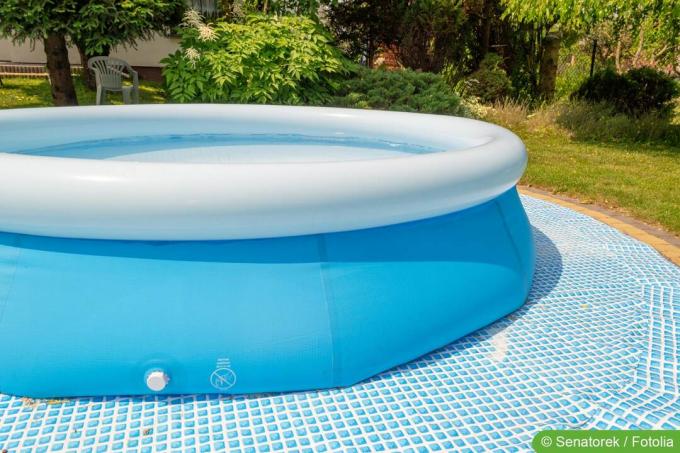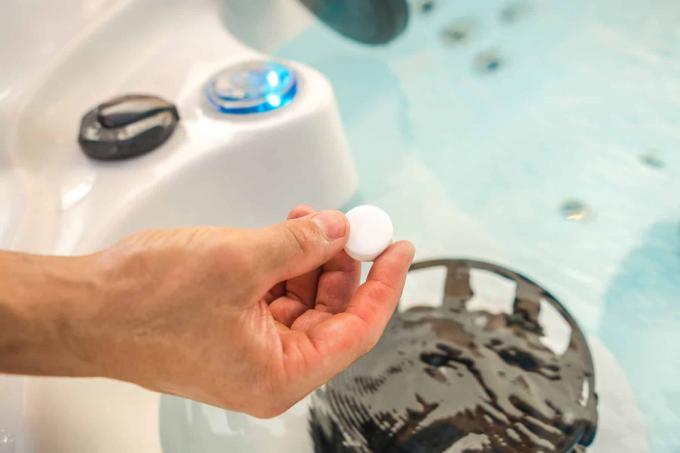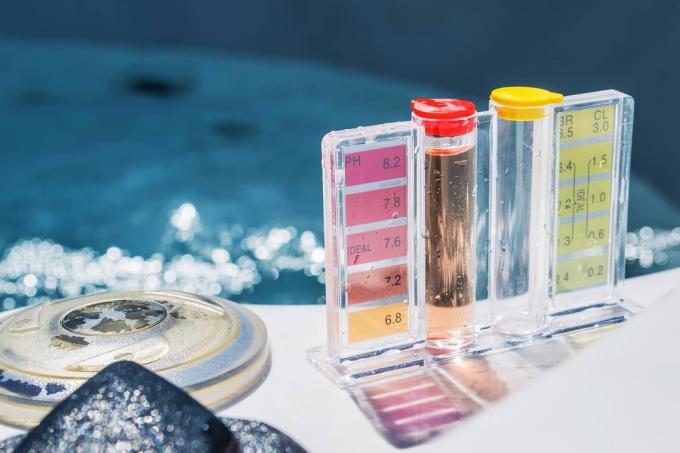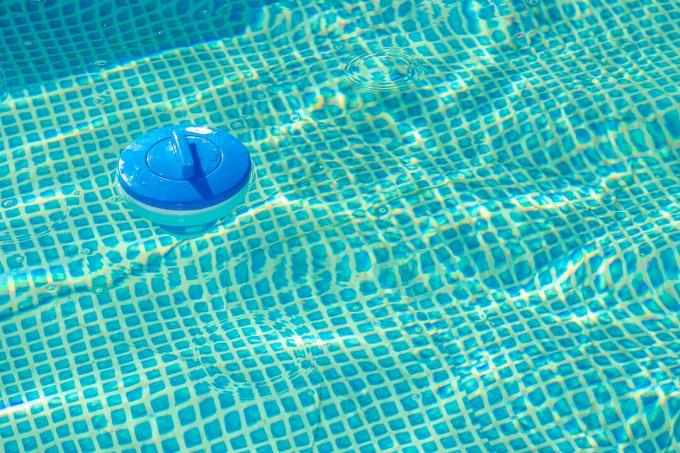

Table of contents
- What are building protection mats?
- Building protection mats on lawns
- Building protection mats on concrete
- mats in the foundation
- Staking & excavation
- compacting
- Foil & Mat
- Fill up
- fleece
- Building protection mats with cover
Building protection mats are available in different versions and bring a number of advantages as a base for the pool. For this purpose, however, attention must be paid to various aspects.
What are building protection mats?
These special mats are rubber pads with recesses. Due to their structure and material, they are visually reminiscent of doormats. It is precisely these properties that make it ideal as a base for a swimming pool.
Among other things, they offer the following advantages:
- dampening and isolating effect
- sound deadening
- Protection against foreign objects such as stones or roots
- Stabilization of loose materials such as sand, crushed stone or gravel
Building protection mats on lawns
Inflatable pools in particular are often placed directly on the lawn. However, this presents a number of risks and disadvantages. These include:
- Rot and mold can develop
- Foreign objects such as stones or roots can damage the bottom of the pool
- grass comes in
- Insects spread
- Lawn is discolored
- uncomfortable walking and sitting in the pool
- Weeds can grow through the mats
It therefore makes sense to remove the turf in any case. Simply laying the mats is not enough. Although they create a distance between the floor and the pool, the disadvantages mentioned still occur.
A notice:
Due to the structure of the rubber pad and the existing recesses, it is not sufficient without combining it with other materials. Because in this case there would be bumps again.

Building protection mats on concrete
A concrete foundation is a wonderful prerequisite for a pool base. This applies to inflatable variants as well as pools with a frame. In the case of slabs, however, the joints between the individual elements can be problematic. Because they result in various potential disadvantages:
- Break off corners or edges
- penetrating weed
- Unevenness, for example due to lowering of the plates
A protective mat under the pool or under the slabs can have a balancing effect and maintain the level surface. It also creates an insulating and cushioning effect. It is therefore ideal for very hard surfaces.
Nevertheless, the rubber mat should not be placed directly under the pool without additional support. Suitable materials are, especially in combination, for example:
- pond fleece
- sand
- gravel
- gravel
The materials used to cover or fill the recesses increase the insulating effect and can therefore, for example, keep the water warm for longer.
Tip:
A combination of sand and a covering pond liner or fleece in a low foundation is best. Additional plates can be placed on top. Concreting the foundation provides further stability.
mats in the foundation
The building protection mats can also be used directly in a foundation. This requires the following steps:

Staking & excavation
The dimensions of the pool are staked out to have an orientation when digging.
The earth is dug up. A spade or a mini excavator, which can be borrowed, are suitable for this.
compacting
The subsoil is compacted with a vibrating plate or a flat vibrator. If you don't want to borrow or rent these devices, you can take boards instead and weigh them down intermittently. A spirit level is used to check whether the ground is level.
Foil & Mat
Foil or underweed fleece are laid out and cut to size.
The building protection mat is also cut to size and placed in the foundation. If there are several pieces, make sure that the individual elements are not spaced apart. Otherwise they could shift.
Fill up
As soon as the mats are spread out, crushed stone, gravel and sand are spread out. The lighter the pool, the less filling material is necessary. Even quartz sand is sufficient for paddling pools.

fleece
Just like the foil, the fleece is spread over the filled foundation and protruding edges are cut off.
This is a very simple foundation that can also be dismantled quickly.
Tip:
If the foundation is a little deeper, the pool gets extra stability. A few centimeters of overhang are sufficient to adjust the pelvis. The distance to the edge can be filled with sand, for example.
Building protection mats with cover
A very simple variant of the underlay for the pool consists of building protection mats with a cover. It is completely sufficient to apply sand and fleece or foil.
It is important that the recesses of the mats are filled and a stable cover is chosen. A simple order is:
- Foil to prevent weeds
- Mats
- sand
- pond liner or fleece
Tip:
Again, the turf should be removed if present. Otherwise, mold and rot may occur.
 Home editorial office
Home editorial office
Learn more about water in the garden

How quickly does chlorine break down?
How quickly chlorine breaks down in pool water is important information for a number of reasons. It is important to know which factors play a decisive role in the degradation rate. This guide shows which influences are decisive.

Too much chlorine in the pool: what to do?
If too much chlorine accidentally ends up in the pool or the chlorine value is inexplicably high, there are several measures you can take. This guide shows what can quickly and sustainably help and reduce the chlorine content.

Too much chlorine in the pool: swim anyway?
If too much chlorine has ended up in the pool, the question immediately arises as to whether bathing is still possible. What risks can this entail and what are the warning signs? Here are the answers.

Reducing chlorine levels in the pool: chlorine levels explained
Is the chlorine level in the pool too high and bathing is not possible? Then good advice does not have to be expensive, because the chlorine values can be easily reduced in several ways and thus brought into the optimal range.

Pool initial filling: initial chlorination dosage
When the pool is about to be filled for the first time, the question of initial chlorination also arises. When and how is it carried out and what dosage is correct. This guide shows step by step how to do it.

How much chlorine in 1,000 liters of water?
Chlorine can keep pool water clear or, as shock chlorination, remove cloudiness and green discoloration. The question of how the right dosage and the optimal values look like arises again and again. This guide provides comprehensive answers.



